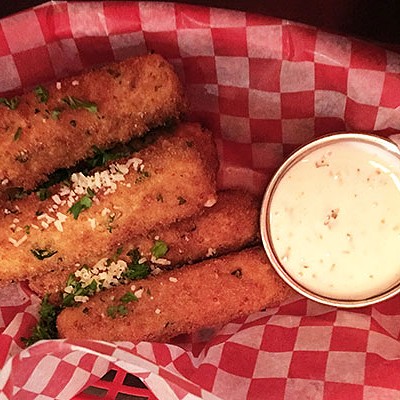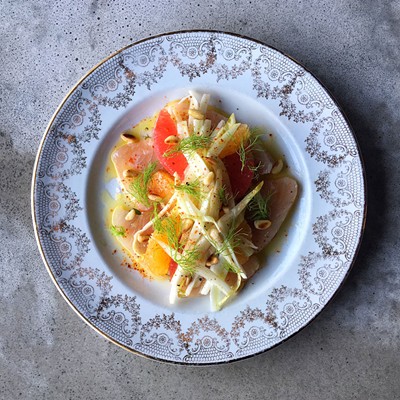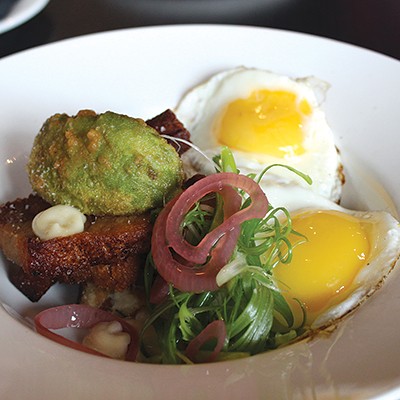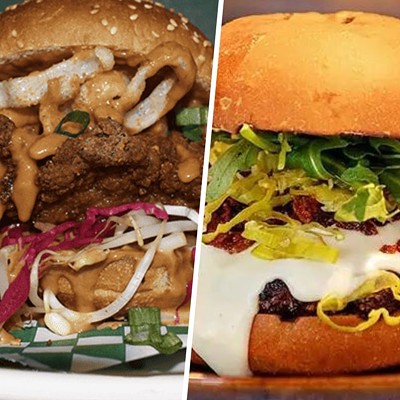At this very moment, there is a steaming pile of blood and guts on my kitchen table. And I can't wait to dig in.
No, this isn't a locally produced version of Fear Factor—this is my supper. The dish in question is boudin noir, a sausage made from pigs' intestines and stuffed with cooked blood, among other ingredients. And it's pretty tasty.
In a world where more and more people are looking to fully embrace the "nose to tail" idea of cooking—where one eats anything and everything available from an animal—blood and guts may be the last culinary frontier.
It's also perhaps one of the most difficult to master. "Blood is the very essence of life and yet the majority of diners are squeamish at the mere thought of ingesting it," says Eddie Lin, creator of Deep End Dining, a site dedicated to uncommon culinary experiences. Blood is used in all sorts of dishes, from boudin, to England's black pudding or Korea's soondae, all blood-based sausages, and many of them available in various ethnic and specialty grocers here in the city.
Even here in Nova Scotia, there is a rich heritage of such dishes—just look at Lunenburg Sausage. You can even find pork blood curd in such grocers as Tian Phat on the Bedford Highway.
"It's mostly Chinese and Filipino people who buy it," says staffer Lisa, "but we do sell a lot of it."
But what about the casing for those beautiful sausages? Many sausage manufacturers who sell "natural casings" are in fact serving you pigs' intestines.
So really, you've probably eaten guts in one form or another. It's not that big of a deal. In France, you can dine on tripe à la mode de Caen, or go down south and have some chitlins with your grits.
All of these dishes fall under the wonderful world of offals. The term offal—sounds like "awful"—is essentially what "falls off" of an animal when you kill and butcher it. Kidneys, liver, intestines and more are not only edible but also often prized by certain diners. Add to that the head, ears, brains, certain glands, feet and tongue and you could have a feast.
The market for these cuts is growing. A few stalls at the Seaport Market, such as Getaway Meat Mongers, are known to carry pig's cheeks, trotters and whole heads, and even your local Atlantic Superstore has started carrying various types of tripe.
Ah tripe—my favourite offal. The interior of a cow's stomach, tripe comes in three varying forms, each with its own textures: smooth, honeycomb or leaf tripe. In Halifax, it's easy to find at Chinese restaurants that serve dim sum. It may come served warm or cold (I prefer it warm), usually steamed and served with matchstick-thin pieces of ginger and sliced scallions, with maybe a drop of sesame oil.
You can often find it in certain Vietnamese soups, such as pho or bun bo hue. But you don't eat tripe for the flavour—you eat it for the varying textures found in the three types. Rubbery and crunchy, soft and squishy or satisfyingly chewy, tripe is a multi-varied thing.
Offals aren't just for soup joints, dim sum and sausages. When asked about their popularity. Eddie Lin points out that "now these 'variety meats' command premium prices and are sold in Michelin-starred restaurants."
Although Halifax has no restos that fall under that category, occasionally certain spots, like Fid, will feature such dishes as sweetbreads—a catchall term for various glands, which boast a rich and savoury flavour—or boudin noir.
"These delicacies add a little thrill to any meal," says Lin. "Besides, who doesn't like food that literally has some guts to it?"












